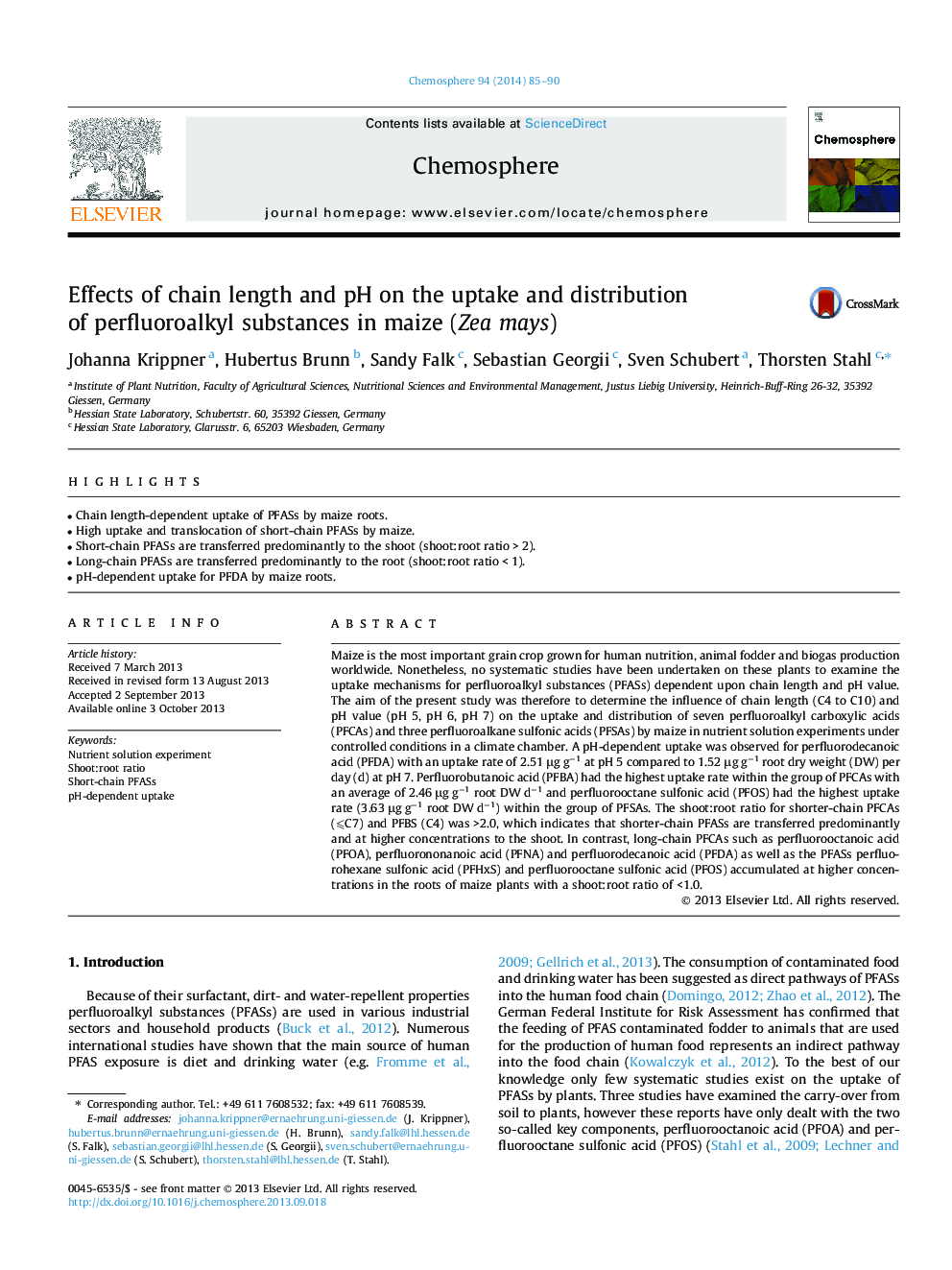| Article ID | Journal | Published Year | Pages | File Type |
|---|---|---|---|---|
| 6309958 | Chemosphere | 2014 | 6 Pages |
Abstract
Maize is the most important grain crop grown for human nutrition, animal fodder and biogas production worldwide. Nonetheless, no systematic studies have been undertaken on these plants to examine the uptake mechanisms for perfluoroalkyl substances (PFASs) dependent upon chain length and pH value. The aim of the present study was therefore to determine the influence of chain length (C4 to C10) and pH value (pH 5, pH 6, pH 7) on the uptake and distribution of seven perfluoroalkyl carboxylic acids (PFCAs) and three perfluoroalkane sulfonic acids (PFSAs) by maize in nutrient solution experiments under controlled conditions in a climate chamber. A pH-dependent uptake was observed for perfluorodecanoic acid (PFDA) with an uptake rate of 2.51 μg gâ1 at pH 5 compared to 1.52 μg gâ1 root dry weight (DW) per day (d) at pH 7. Perfluorobutanoic acid (PFBA) had the highest uptake rate within the group of PFCAs with an average of 2.46 μg gâ1 root DW dâ1 and perfluorooctane sulfonic acid (PFOS) had the highest uptake rate (3.63 μg gâ1 root DW dâ1) within the group of PFSAs. The shoot:root ratio for shorter-chain PFCAs (⩽C7) and PFBS (C4) was >2.0, which indicates that shorter-chain PFASs are transferred predominantly and at higher concentrations to the shoot. In contrast, long-chain PFCAs such as perfluorooctanoic acid (PFOA), perfluorononanoic acid (PFNA) and perfluorodecanoic acid (PFDA) as well as the PFASs perfluorohexane sulfonic acid (PFHxS) and perfluorooctane sulfonic acid (PFOS) accumulated at higher concentrations in the roots of maize plants with a shoot:root ratio of <1.0.
Keywords
Related Topics
Life Sciences
Environmental Science
Environmental Chemistry
Authors
Johanna Krippner, Hubertus Brunn, Sandy Falk, Sebastian Georgii, Sven Schubert, Thorsten Stahl,
